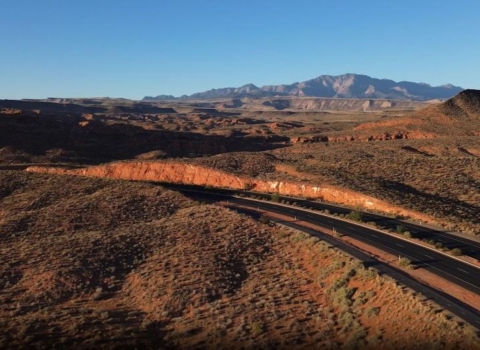The U.S. Fish and Wildlife Service is removing Adiantum vivesii (no common name), a fern native to northwestern Puerto Rico, from the Endangered Species Act (ESA). After a review of the best available scientific and commercial data, including the five-year status review, the Service has found that Adiantum vivesii is a sterile hybrid of two common fern species. As such, the original data used at the time the species was listed were in error and the species is not a listable entity under the ESA.
“The Service’s work is grounded in thorough, objective science with a goal of conserving natural resources for future generations,” said Leopoldo Miranda-Castro, the Service’s Regional Director. “An integral part of our statutory framework is to make delisting decisions when appropriate and to revise accordingly. Delisting species that do not qualify for ESA protections allows the Service to responsibly allocate resources for species needing protection under the ESA.”
Adiantum vivesii is a fern native to the limestone-karst region of northwestern Puerto Rico. First described in 1985, the fern was only known from one population on a privately-owned limestone hill in Quebradillas. The fern was listed as endangered in 1993 and at the time of its listing, the only known population was thought to be comprised of about 1,000 plants.
Since its listing, research conducted on Adiantum vivesii led to a determination that the plant is not a discrete taxonomic entity. Although approximately 1,000 stems of the plant were present at the site of the only known population, excavation found that all above-ground stems were connected below-ground through rhizomes or underground stems. Additional investigation determined the plant to be a single, sterile hybrid resulting from the hybridization between two common fern species. Adiantum vivesii therefore no longer qualifies for protection under the ESA as it does not meet the ESA’s definition of a species. The original data used at the time it was listed was in error.
The delisting of Adiantum vivesii becomes effective on September 23, 2022, 30 days after its publication in the Federal Register.
The U.S. Fish and Wildlife Service works with others to conserve, protect, and enhance fish, wildlife, plants, and their habitats for the continuing benefit of the American people. For more information on our work and the people who make it happen, visit http://www.fws.gov/. Connect with our Facebook page, follow our tweets, watch our YouTube Channel and download photos from our Flickr page.

